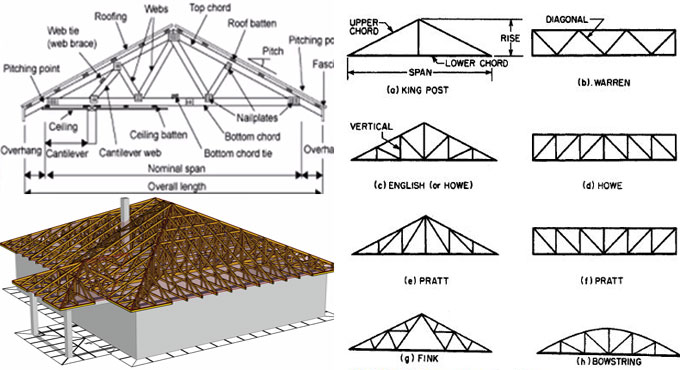The industrial buildings such as godowns and factory floors are often low rise structures with few or none internal walls. In such buildings, special Care needs to be taken while designing industrial roof trusses, since large spans need to support the entire roofing system without intermittent support. Trusses with roof covering materials make up of the entire roofing assembly here.
What are Trusses?
Trusses are triangular formation of metal sections, usually used to span large lengths in space instead of solid girders. The external load apply mostly axial forces on the members in a truss. Depending upon how the force is applied, trusses can be designed in the following two ways:
Trusses are triangular formation of metal sections, usually used to span large lengths in space instead of solid girders. The external load apply mostly axial forces on the members in a truss. Depending upon how the force is applied, trusses can be designed in the following two ways:
Plane Trusses: where the external load is placed on the plane of the truss.
Space Trusses: where the external load can be applied to any three-dimensional space within.
How are Trusses Built?
Trusses mostly consist of axially loaded members to support loads. The reason for this that when steel members are subjected to axial forces, they perform better in bearing that load, than members that are in flexure. This is because the cross-section of such a system is uniformly stressed under axial forces.
Trusses mostly consist of axially loaded members to support loads. The reason for this that when steel members are subjected to axial forces, they perform better in bearing that load, than members that are in flexure. This is because the cross-section of such a system is uniformly stressed under axial forces.
Trusses are very common in most architecture. Mostly used to span long distances, they are well suited to bear the load of single-storey industrial buildings. They can also be designed to bear gravity loads in long span floors. For the same reason they are also mounted to bear loads of long span bridges.

~~~~~~~~~~~~~~~~~~~~~~~~~~
Published By
Rajib Dey
www.constructioncost.co
~~~~~~~~~~~~~~~~~~~~~~~~~~
Published By
Rajib Dey
www.constructioncost.co
~~~~~~~~~~~~~~~~~~~~~~~~~~
No comments:
Post a Comment